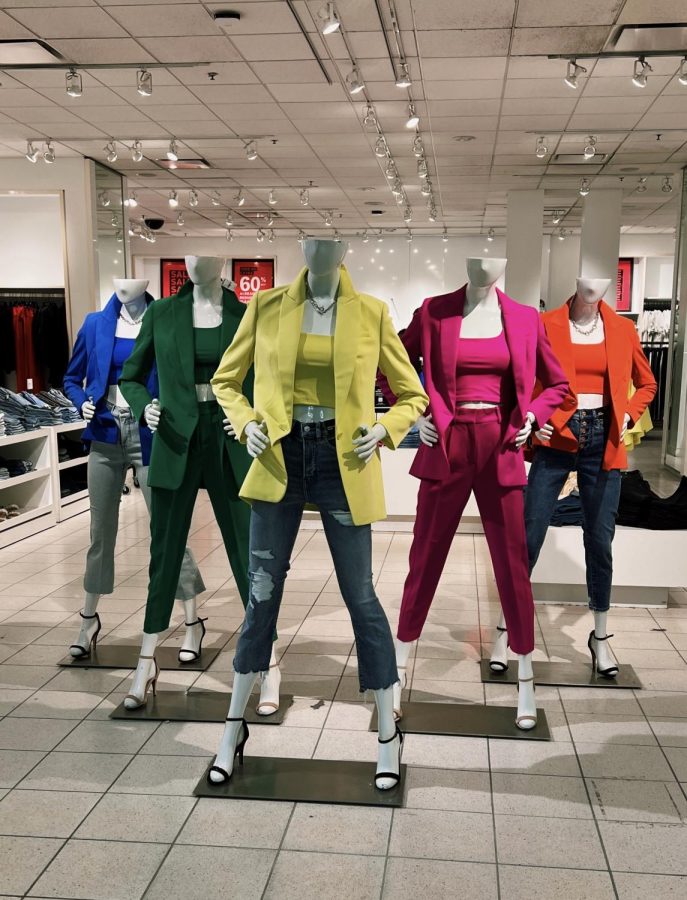One after another, storefronts feature mannequins modeling the same colors, patterns and styles. Each store adapts their designs ever so slightly in an attempt to be original, calling for a very uninspiring stroll through the mall.
The idea of trends coming and going is not a new one; however, it seems as though this process has recently accelerated. This may be partly due to social media advertising new trends daily. Many brands will even change their entire social media presence monthly to align with the latest aesthetic trends.
Senior Maya Maynard typically gravitates towards following the latest fashion trends. “Most of my swimsuits I order from Shein because of the affordability; almost all of those swimsuits follow a trend. Most of the time I just buy clothes I like, which also usually happens to be the trend at the time,” she said.
There is no shame in people participating in trends they like. However, the constant change of fashion trends may be difficult to sustain both environmentally and financially for individuals.
Senior Ava Kwak prefers building her wardrobe around more basic elements of clothing. “I wouldn’t say I heavily participate in clothing trends. Some of my friends say I dress like a mom if that tells you anything,” she said. “I usually stick to basics…I don’t like to buy things that I’m only going to wear once.”
For some people, building a wardrobe around practicality is more important than following the latest trends. It can be difficult to keep up with the latest styles.
Even clothing stores, both large corporations and small boutiques, struggle to keep up with ever-changing trends. By the time trends become popular enough for companies to recognize and mass produce them, they are already out of style. This leads to mass waste of clothing and clearance markdowns. Not only is this detrimental to businesses because they are missing out on profit, but there are also environmental costs.
Around 57% of all discarded clothing ends up in landfills contributing to one of the largest environmental problems: land pollution. People can lessen the environmental impact by donating their clothes instead of discarding them, but the problem does not stop there.
Trend-targeted clothing just speeds up the already accelerated clothing cycle. People buy cheaply made, low-quality clothes, produced by people making less than living wage, for the sole purpose of them being cheap. No one wants to buy low quality clothing, but when they are given the opportunity to participate in the latest trend affordably, the offer is hard to pass up.
Trends are inevitable. There will always be patterns in people’s behaviors and thoughts which affects how they dress. Although following trends is acceptable, it can be easy for people to get lost in them.










maya • Mar 29, 2022 at 8:50 am
Good article Sidney. It gives insight about fashion trends that most people don’t know. I liked how you included boutiques in this.
Kerri R • Mar 25, 2022 at 10:51 pm
Personally I don’t try to follow any trends and I don’t find myself doing that I just pick the same clothing as I have for years but I do like this article because it informs me of what is going on with trends.
Adelaide Wolfe • Mar 24, 2022 at 11:22 am
I really like this article because it sheds light on an issue that many of us don’t even realize is an issue. I also like how you looked at the perspectives of two people, one who does follow trends and the other who doesn’t follow trends.